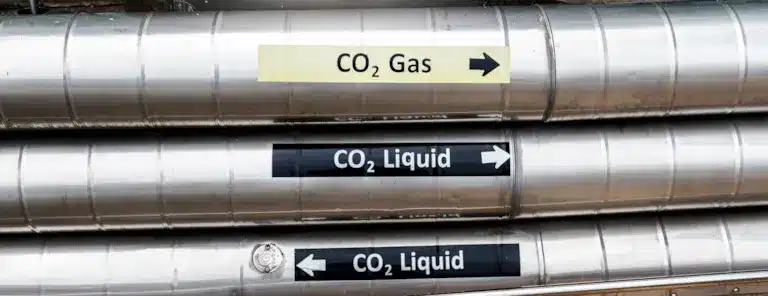DNV Certifies first CO2 storage site for flagship Danish Carbon Capture and Storage project
Denmark’s First CO2 Storage Site Certified: A Big Step for Project Greensand and the Future of Carbon Capture

Denmark Makes History with First CO2 Storage Site Certification
Denmark has taken a big step in fighting climate change with its first CO2 storage site, Project Greensand. This site has been certified by DNV, a leading expert in energy and safety, marking a major achievement in the world of carbon capture and storage (CCS). CCS is a technology that helps capture carbon dioxide (CO2) from the air and store it safely underground to reduce harmful emissions.
What is Project Greensand?
Project Greensand is a large project involving 23 different partners. Its goal is to safely store CO2 under the North Sea, so it doesn’t escape into the atmosphere. This is Denmark’s first CO2 storage project, and it will help the country fight climate change.
The certification from DNV, called the Certificate of Conformity, shows that the project meets strict international safety standards. This proves that Project Greensand can safely store large amounts of CO2 without causing harm.
How Does Carbon Storage Help?
When we burn fossil fuels, like oil and gas, CO2 is released into the air, contributing to global warming. Carbon capture and storage (CCS) helps by capturing this CO2 and putting it deep underground where it can’t harm the planet. It’s a way to stop climate change and reduce our carbon footprint.
Mads Gade, the head of INEOS Energy Denmark, one of the project’s partners, said that the certification gives them confidence to move forward. “We now know that our site can safely and permanently store CO2 that would otherwise be in the atmosphere,” he explained.
Global Impact of CCS Technologies
As more countries and companies work to meet climate goals, CCS is becoming more important. DNV plays a big role by making sure these projects are safe and reliable. Their certification services ensure that CO2 capture, transport, and storage are done according to strict rules.
“CCS is key to reducing CO2 emissions,” said Prajeev Rasiah, DNV’s Vice President for Northern Europe. “We help companies make sure their CCS projects are safe and meet high standards.”
Project Greensand: A Model for the Future
DNV has worked with Project Greensand from the beginning, helping them develop safe ways to store CO2. Jonathan Pye, a senior consultant at DNV, said, “Our review confirms that the site meets all safety requirements. This project is an example of how CO2 storage can be done safely around the world.”
The pilot phase of Project Greensand has already shown that CO2 can be captured and stored securely. By 2025, the project aims to store up to 400,000 tonnes of CO2 each year, with plans to increase that number to 3 million tonnes by 2030.
What’s Next for Carbon Storage?
The global CCS market is expected to grow as more companies and governments use this technology to meet climate targets. DNV will continue to play a key role in ensuring these projects are safe and effective.
“Our job is to make sure CO2 storage is safe and reliable,” said Rasiah. “We’re proud to support companies as they work towards a low-carbon future.”
Project Greensand is setting an example for other CO2 storage projects around the world. With DNV’s certification, the project has proven that it can safely store CO2 and help Denmark meet its climate goals.
About DNV
DNV is an independent expert in energy and safety, working in over 100 countries. They help companies and governments ensure their projects are safe, sustainable, and meet international standards. From ship design to renewable energy projects, DNV provides expert advice and certification to support the global transition to cleaner, greener energy.
Conclusion
With the certification of Project Greensand, Denmark is showing the world that it’s possible to store CO2 safely and fight climate change. This project is just the beginning, and more CCS projects will follow as countries and companies work together to meet climate goals. DNV’s role in ensuring the safety and success of these projects is key to making sure that carbon capture becomes a major part of our efforts to protect the planet.

